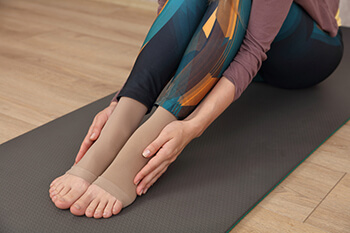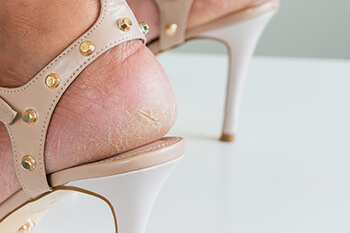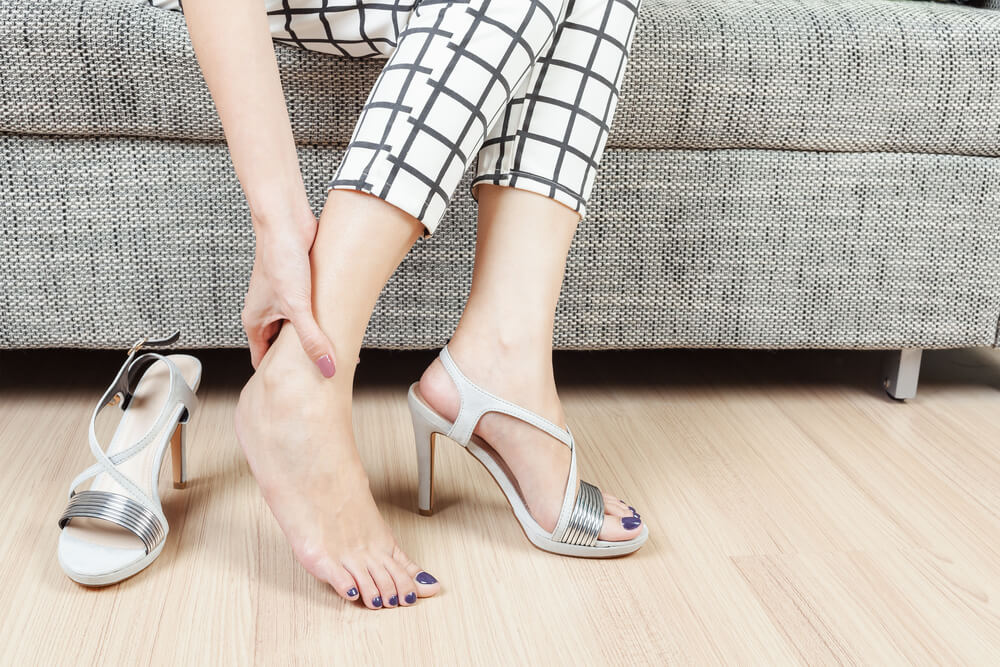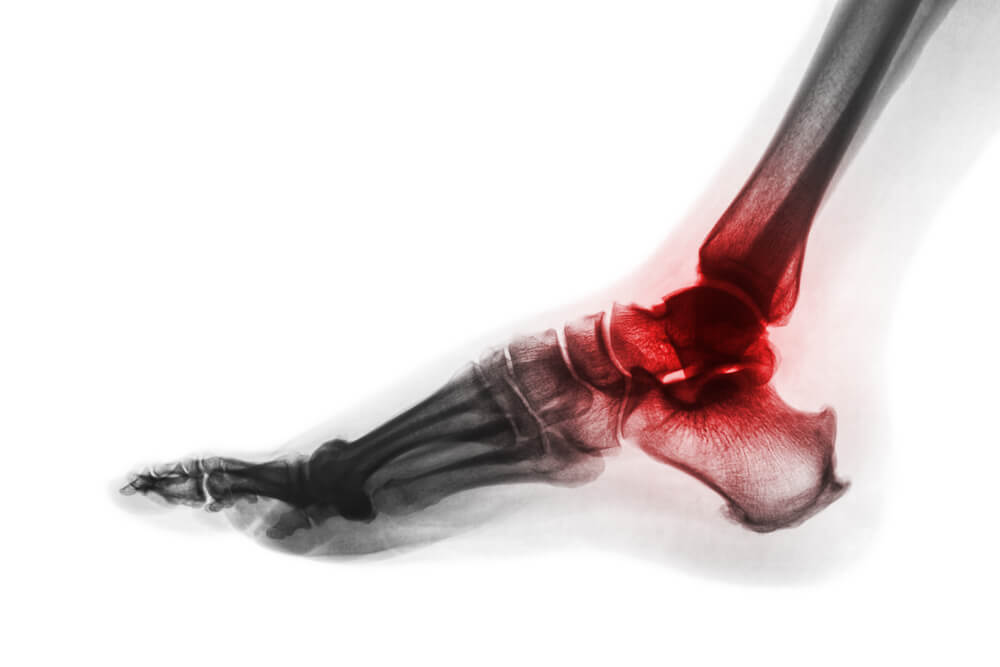Items filtered by date: December 2021
Symptoms of Poor Circulation in the Feet
 Poor circulation refers to impaired blood flow. This can happen in any part of the body but is particularly common in the feet. If you have poor foot circulation, you may experience a variety of symptoms. These can include cold feet, numbness, tingling or a pins and needles sensation, swelling, skin discoloration, pain or aching, a feeling of heaviness in the feet, and increased fatigue. Poor circulation can have many causes. It becomes more common as we age but can also be brought about by a sedentary lifestyle or obesity. Poor foot circulation is also associated with certain medical conditions, such as diabetes, deep vein thrombosis, atherosclerosis, peripheral artery disease, and venous insufficiency. If you have poor circulation in your feet, a chiropodist can help you manage this condition.
Poor circulation refers to impaired blood flow. This can happen in any part of the body but is particularly common in the feet. If you have poor foot circulation, you may experience a variety of symptoms. These can include cold feet, numbness, tingling or a pins and needles sensation, swelling, skin discoloration, pain or aching, a feeling of heaviness in the feet, and increased fatigue. Poor circulation can have many causes. It becomes more common as we age but can also be brought about by a sedentary lifestyle or obesity. Poor foot circulation is also associated with certain medical conditions, such as diabetes, deep vein thrombosis, atherosclerosis, peripheral artery disease, and venous insufficiency. If you have poor circulation in your feet, a chiropodist can help you manage this condition.
When blood flow to a specific part of the body is reduced, you may experience symptoms of poor circulation. Poor circulation is most common in your extremities, like your legs and feet. Please consult with one of the chiropodists from Complete Family Footcare & Therapy. Our clinicians will assess your condition and provide you with quality foot and ankle treatment.
Causes
Poor circulation isn’t a condition in itself. Instead, it results from other health issues. Therefore, it’s important to treat the underlying causes:
Peripheral artery disease (PAD)
Diabetes
Blood clots
Varicose veins
Obesity
Raynaud’s disease
Symptoms
Symptoms of poor circulation may include:
Numbness
Tingling
Throbbing or stinging pain in limbs
Pain
Muscle Cramps
Diagnosis
A chiropodist will perform a physical exam to detect pain and swelling, as well as an antibodies blood test to detect inflammatory conditions, such as Raynaud’s disease. It’s important to disclose any known family history of poor circulation and any related diseases. A blood sugar test, blood pressure test, ultrasound, or CT scan may also be performed.
Treatment
Treatments for poor circulation depend on what is causing it. Compression socks may be used to reduce pain and swelling. An exercise program may be recommended to improve circulation. Various medications may be prescribed to manage underlying conditions that may contribute to poor circulation.
If you have any questions, please feel free to contact our offices located in . We offer the newest diagnostic and treatment technologies for all your foot care needs.
Read more about Poor CirculationWhat Causes Cracked Heels?
 Dry, cracked skin on the heels can be frustrating, unsightly, painful, and irritating. Cracked heels may be caused by dehydration of the skin, extreme weather, wearing open-backed shoes, or medical conditions such as eczema and athlete’s foot. Cracked heels can be prevented by avoiding exposure to very hot or cold weather and wearing appropriate footwear that protects your feet. When bathing, it is suggested to avoid using very hot water and soaps with drying ingredients, such as sodium lauryl sulfate and artificial fragrances. Moisturizing your feet regularly can help reduce dryness as well. If you have dry, cracked heels that are embarrassing or causing you pain or discomfort, it is recommended that you consult with a chiropodist for treatment.
Dry, cracked skin on the heels can be frustrating, unsightly, painful, and irritating. Cracked heels may be caused by dehydration of the skin, extreme weather, wearing open-backed shoes, or medical conditions such as eczema and athlete’s foot. Cracked heels can be prevented by avoiding exposure to very hot or cold weather and wearing appropriate footwear that protects your feet. When bathing, it is suggested to avoid using very hot water and soaps with drying ingredients, such as sodium lauryl sulfate and artificial fragrances. Moisturizing your feet regularly can help reduce dryness as well. If you have dry, cracked heels that are embarrassing or causing you pain or discomfort, it is recommended that you consult with a chiropodist for treatment.
Cracked heels, also known as heel fissures, can cause pain and discomfort. If your cracked heels are bothering you, please consult with one of the chiropodists from Complete Family Footcare & Therapy. Our clinicians will assess your condition and provide you with quality foot and ankle treatment.
Dry, thickened skin around the rim of the heel is typically the first sign of cracked heels. While this condition is common and usually just a nuisance, some cases can be more severe. If left untreated and as more pressure is placed on the heel, the cracks become deeper and eventually walking and standing can be painful. These deep cracks or fissures can bleed and also become infected. Those with diabetes need to be especially careful as fissures could lead to diabetic foot ulcers.
Causes
Cracked heels can be the result of several different factors, including:
Dry skin
Taking long, hot showers or using harsh soaps
Standing for long periods of time
Walking barefoot
Walking in shoes with an open back, such as sandals or flip flops
Wearing shoes that do not fit properly
Living in a cold or dry climate
Certain skin conditions, such as eczema or psoriasis
Treatment
There are many at-home treatment remedies for cracked heels. Applying moisturizers to the heel can help hydrate the skin. Soaking your feet in warm water and exfoliating them with a loofah or pumice stone can help to buff away dead skin cells. If you are afflicted with cracked heels, it is recommended that you see a chiropodist for treatment.
Prevention
You can prevent cracked heels by:
Avoiding standing in one position for prolonged periods of time
Wearing well-fitted shoes with a closed back
Washing your feet with gentle soaps and lukewarm water
Moisturizing the feet daily
If you have any questions, please feel free to contact our offices located in . We offer the newest diagnostic and treatment technologies for all your foot care needs.
Read more about Curing Cracked HeelsHow Is Toenail Fungus Treated?
 A fungal infection of the toenails is also known as onychomycosis. This condition causes the nails to become distorted, thickened, brittle or crumbly, and discolored. The nail may lift from the nail bed, and it can emit an odor. Fungal infections typically affect toenails more than fingernails due to the toes being confined to shoes, where they’re in a warm, moist environment where fungi thrive. The fungal infection can affect part of the nail, the entire nail, or several nails. Toenail fungus is often treated through oral antifungal medications. You may also be prescribed topical medications, such as antifungal nail polishes, which are brushed directly onto the affected nails. If you have developed a toenail fungus, it is recommended that you see a chiropodist for proper treatment.
A fungal infection of the toenails is also known as onychomycosis. This condition causes the nails to become distorted, thickened, brittle or crumbly, and discolored. The nail may lift from the nail bed, and it can emit an odor. Fungal infections typically affect toenails more than fingernails due to the toes being confined to shoes, where they’re in a warm, moist environment where fungi thrive. The fungal infection can affect part of the nail, the entire nail, or several nails. Toenail fungus is often treated through oral antifungal medications. You may also be prescribed topical medications, such as antifungal nail polishes, which are brushed directly onto the affected nails. If you have developed a toenail fungus, it is recommended that you see a chiropodist for proper treatment.
Toenail fungus can be uncomfortable and unsightly. If you have diabetes or a compromised immune system, it may also be dangerous. To learn more about treatment options, please consult with one of the chiropodists from Complete Family Footcare & Therapy. Our clinicians will assess your condition and provide you with quality foot and ankle treatment.
What Does Toenail Fungus Look Like?
A fungal infection of the toenail may cause the affected nail to become thickened, brittle, crumbly, and yellowish or brown in color. Sometimes the toenail may separate from the nail bed, become deformed, emit a foul odor, or cause pain or discomfort.
What Causes Toenail Fungus?
Toenail fungus is caused by a fungus that infects the nail bed. The fungus lives and thrives in warm and moist environments and is also contagious. Athlete’s foot, which is a fungal infection of the skin, may spread to the nails and cause toenail fungus.
What Treatments Are Available?
Potential treatments for toenail fungus may include oral antifungal medications, topical antifungal medications, such as medicated nail polishes that are applied directly to the affected nail, and laser therapy. Sometimes, a combination of treatments is prescribed.
If you have any questions, please feel free to contact our offices located in . We offer the newest diagnostic and treatment technologies for all your foot care needs.
Read more about Treating Toenail FungusDo Your Child's Feet Hurt?
Why Is My Ankle Painful?
 The ankle is a joint made up of many components, such as leg and foot bones, ligaments, nerves, cartilage, tendons, and muscles. As a complex joint that is responsible for the foot’s up-and-down movement, it is prone injury in various ways, often causing pain. Ankle sprains and strains are the most common form of ankle pain. Other possible reasons for ankle pain include Achilles tendonitis, a ruptured Achilles tendon, nerve damage, a tumor, and different forms of arthritis—such as gout, osteoarthritis and rheumatoid arthritis. Along with pain, you may experience redness, bruising and numbness, or tingling, and your ankle may feel weak or stiff. You may also have difficulty putting weight on the ankle. Chiropodists frequently deal with all matters of ankle pain, so it may be wise to make an appointment if you are experiencing any of these symptoms in order to get the proper diagnosis treatment.
The ankle is a joint made up of many components, such as leg and foot bones, ligaments, nerves, cartilage, tendons, and muscles. As a complex joint that is responsible for the foot’s up-and-down movement, it is prone injury in various ways, often causing pain. Ankle sprains and strains are the most common form of ankle pain. Other possible reasons for ankle pain include Achilles tendonitis, a ruptured Achilles tendon, nerve damage, a tumor, and different forms of arthritis—such as gout, osteoarthritis and rheumatoid arthritis. Along with pain, you may experience redness, bruising and numbness, or tingling, and your ankle may feel weak or stiff. You may also have difficulty putting weight on the ankle. Chiropodists frequently deal with all matters of ankle pain, so it may be wise to make an appointment if you are experiencing any of these symptoms in order to get the proper diagnosis treatment.
Ankle pain can have many different causes and the pain may potentially be serious. If you have ankle pain, consult with one of our chiropodists of Complete Family Footcare & Therapy. Our clinicianswill assess your condition and provide you with quality foot and ankle treatment.
Ankle pain is any condition that causes pain in the ankle. Due to the fact that the ankle consists of tendons, muscles, bones, and ligaments, ankle pain can come from a number of different conditions.
Causes
The most common causes of ankle pain include:
- Types of arthritis (rheumatoid, osteoarthritis, and gout)
- Ankle sprains
- Broken ankles
- Achilles tendinitis
- Achilles tendon rupture
- Stress fractures
- Tarsal tunnel syndrome
- Plantar fasciitis
Symptoms
Symptoms of ankle injury vary based upon the condition. Pain may include general pain and discomfort, swelling, aching, redness, bruising, burning or stabbing sensations, and/or loss of sensation.
Diagnosis
Due to the wide variety of potential causes of ankle pain, chiropodists will utilize a number of different methods to properly diagnose ankle pain. This can include asking for personal and family medical histories and of any recent injuries. Further diagnosis may include sensation tests, a physical examination, and potentially x-rays or other imaging tests.
Treatment
Just as the range of causes varies widely, so do treatments. Some more common treatments are rest, ice packs, keeping pressure off the foot, orthotics and braces, medication for inflammation and pain, and surgery.
If you have any questions please feel free to contact our offices located in North York, and Mississauga, ON. We offer the newest diagnostic and treatment technologies for all your foot and ankle needs.
What Is Osteoarthritis?
 Osteoarthritis is a common joint disease that is caused by degeneration of cartilage, a layer of tissue that lines the ends of bones and helps them move smoothly. When the cartilage is worn away, the bones begin to rub directly against each other as they move, leading to pain, swelling, and joint stiffness. Osteoarthritis often affects the joints in the feet and ankles. In addition to the symptoms of arthritis itself, this condition can also cause other foot problems, such as bunions, hallux rigidus, and corns and calluses. Osteoarthritis is associated with aging and tends to affect people over age 45. People who are overweight or obese, have a family history of osteoarthritis, or have a medical history of rheumatoid arthritis or gout are most at risk. If you are experiencing symptoms of osteoarthritis in your feet or ankles, please consult with a chiropodist.
Osteoarthritis is a common joint disease that is caused by degeneration of cartilage, a layer of tissue that lines the ends of bones and helps them move smoothly. When the cartilage is worn away, the bones begin to rub directly against each other as they move, leading to pain, swelling, and joint stiffness. Osteoarthritis often affects the joints in the feet and ankles. In addition to the symptoms of arthritis itself, this condition can also cause other foot problems, such as bunions, hallux rigidus, and corns and calluses. Osteoarthritis is associated with aging and tends to affect people over age 45. People who are overweight or obese, have a family history of osteoarthritis, or have a medical history of rheumatoid arthritis or gout are most at risk. If you are experiencing symptoms of osteoarthritis in your feet or ankles, please consult with a chiropodist.
Arthritis can be a difficult condition to live with. If you are seeking treatment, contact one of our chiropodists of Complete Family Footcare & Therapy. Our clinicians can provide the care you need to keep you pain-free and on your feet.
Arthritic Foot Care
Arthritis is a term that is commonly used to describe joint pain. The condition itself can occur to anyone of any age, race, or gender, and there are over 100 types of it. Nevertheless, arthritis is more commonly found in women compared to men, and it is also more prevalent in those who are overweight. The causes of arthritis vary depending on which type of arthritis you have. Osteoarthritis for example, is often caused by injury, while rheumatoid arthritis is caused by a misdirected immune system.
Symptoms
- Swelling
- Pain
- Stiffness
- Decreased Range of Motion
Arthritic symptoms range in severity, and they may come and go. Some symptoms stay the same for several years but could potentially get worse with time. Severe cases of arthritis can prevent its sufferers from performing daily activities and make walking difficult.
Risk Factors
- Occupation – Occupations requiring repetitive knee movements have been linked to osteoarthritis
- Obesity – Excess weight can contribute to osteoarthritis development
- Infection – Microbial agents can infect the joints and trigger arthritis
- Joint Injuries – Damage to joints may lead to osteoarthritis
- Age – Risk increases with age
- Gender –Most types are more common in women
- Genetics – Arthritis can be hereditary
If you suspect your arthritis is affecting your feet, it is crucial that you see a chiropodist immediately. Your clinician will be able to address your specific case and help you decide which treatment method is best for you.
If you have any questions please feel free to contact our offices located in North York, and Mississauga, ON. We offer the newest diagnostic and treatment technologies for all your foot and ankle needs.

